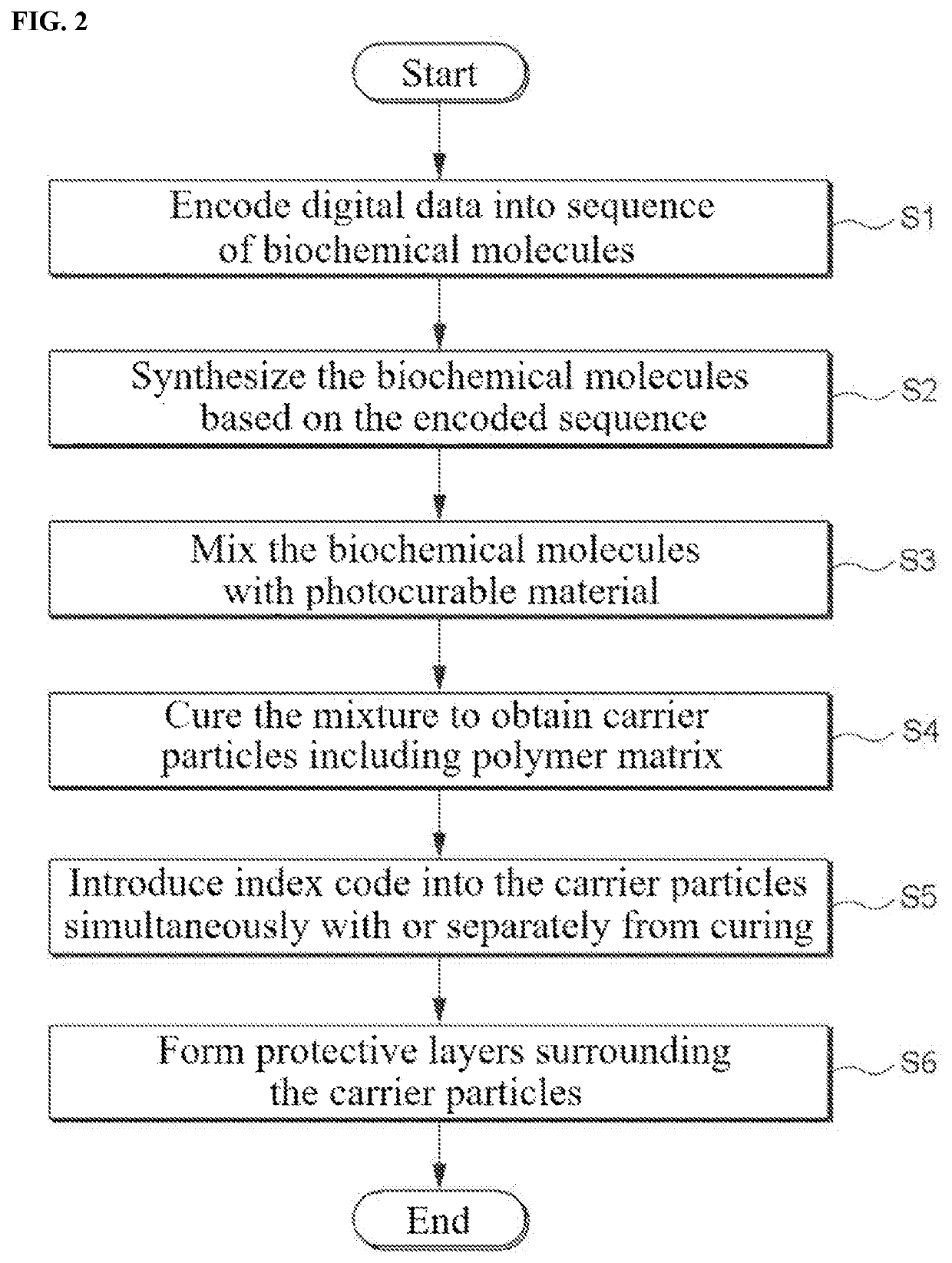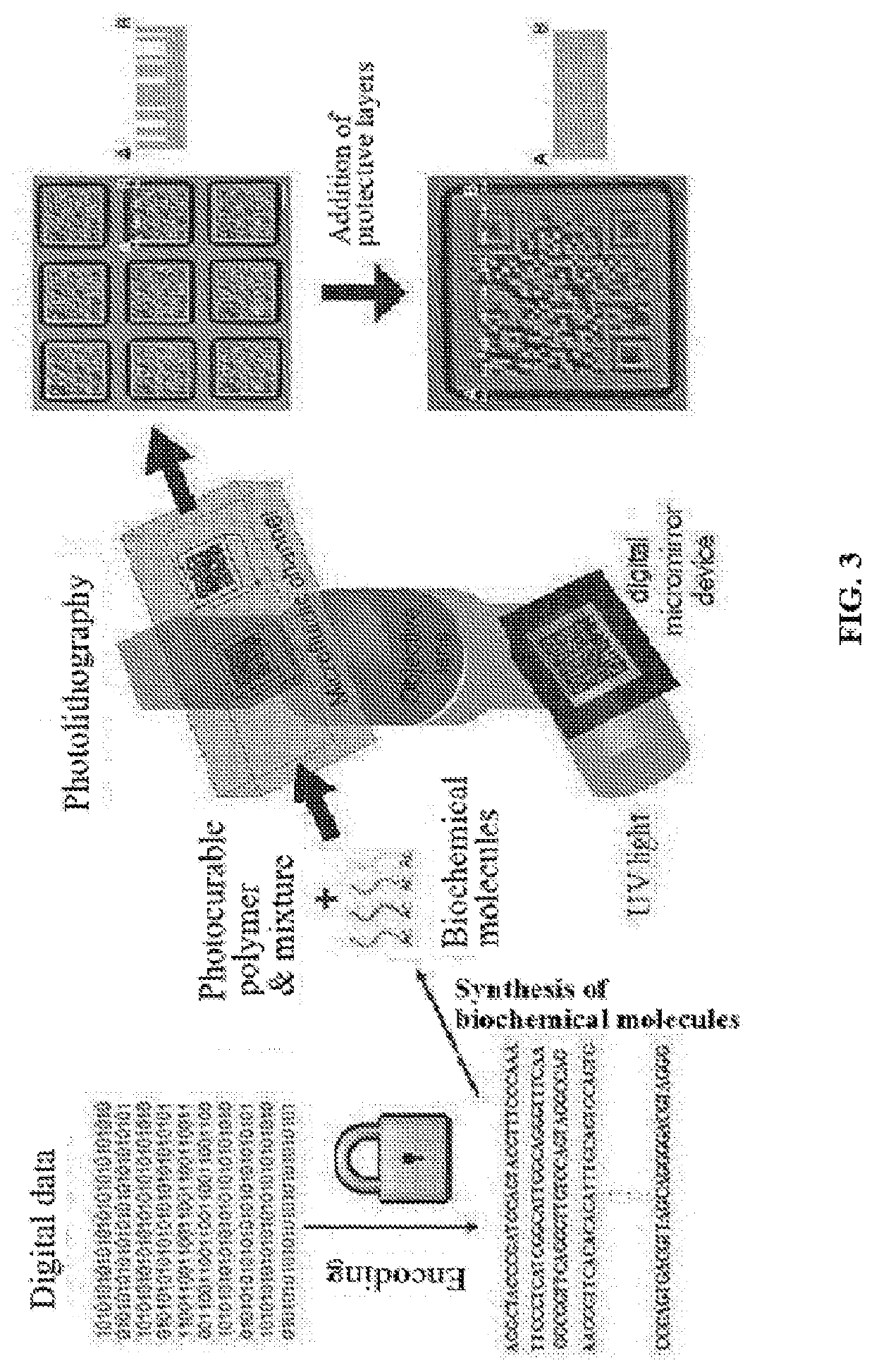Biochemical carriers capable of storage, preservation and indexing and method for fabricating the same
a biochemical and carrier technology, applied in the field of biochemical carriers, can solve the problems of space utilization efficiency and integration disadvantages, and achieve the effects of high space utilization efficiency, easy classification, arranging, and handling
- Summary
- Abstract
- Description
- Claims
- Application Information
AI Technical Summary
Benefits of technology
Problems solved by technology
Method used
Image
Examples
examples
[0076]1. Fabrication of Biochemical Carriers
[0077]Biochemical carriers were fabricated by the following procedure. FIG. 6 shows an actual biochemical carrier fabricated by a method according to one embodiment of the present disclosure. In FIG. 6, (a) is a scanning image of the Haerye edition of Hunminj eongeum, a document describing an entirely new and native script for the Korean language, to be stored in the biochemical carrier, and (b) is an image of a synthesized carrier particle. The scale bar in the bottom right hand corner of the image represents 200 μm. In FIG. 6, (c) shows information determined after recognition of a QR code of the carrier particle and exemplary results when access to the indicated URL, and (d) shows handling of the carrier particle with tweezers.
[0078]In this experiment, the first sheet of the Haerye edition of Hunminjeongeum was scanned as digital data information to be stored (see (a) of FIG. 6). The information of the scanned image was designed as abou...
PUM
| Property | Measurement | Unit |
|---|---|---|
| pore size | aaaaa | aaaaa |
| pore size | aaaaa | aaaaa |
| pore size | aaaaa | aaaaa |
Abstract
Description
Claims
Application Information
 Login to View More
Login to View More - R&D
- Intellectual Property
- Life Sciences
- Materials
- Tech Scout
- Unparalleled Data Quality
- Higher Quality Content
- 60% Fewer Hallucinations
Browse by: Latest US Patents, China's latest patents, Technical Efficacy Thesaurus, Application Domain, Technology Topic, Popular Technical Reports.
© 2025 PatSnap. All rights reserved.Legal|Privacy policy|Modern Slavery Act Transparency Statement|Sitemap|About US| Contact US: help@patsnap.com



